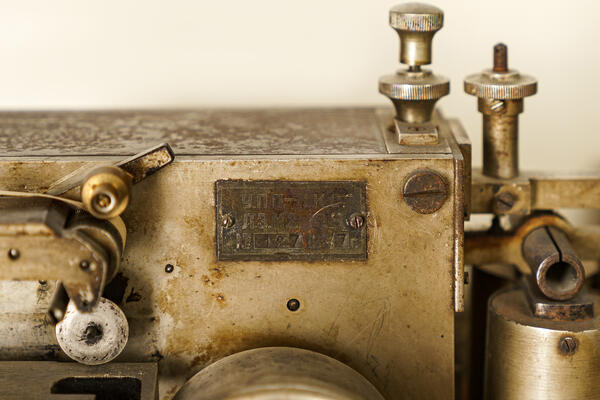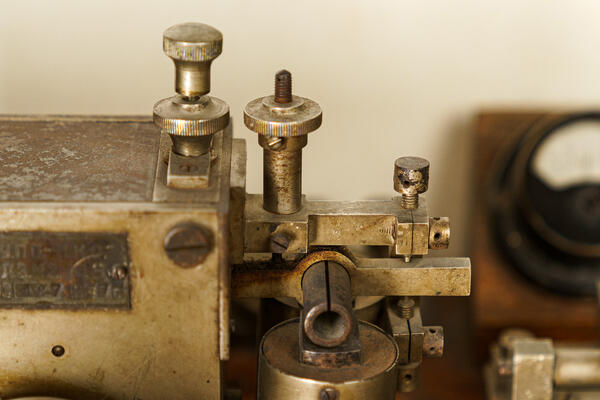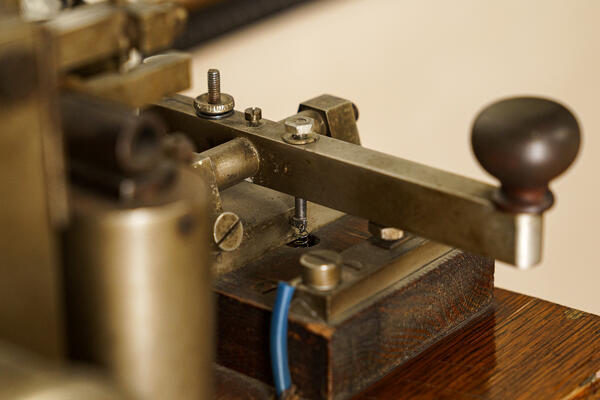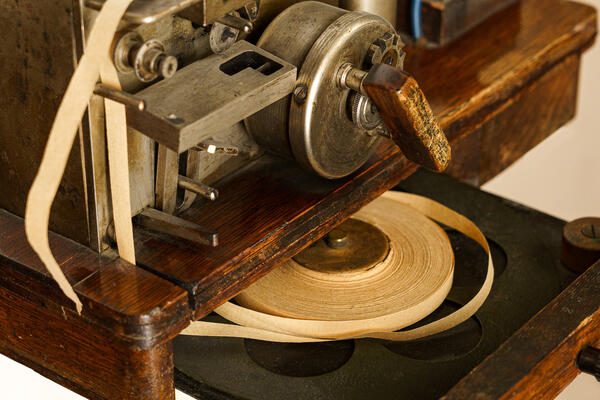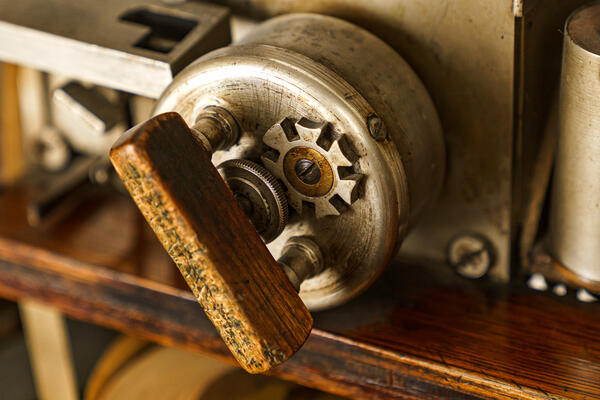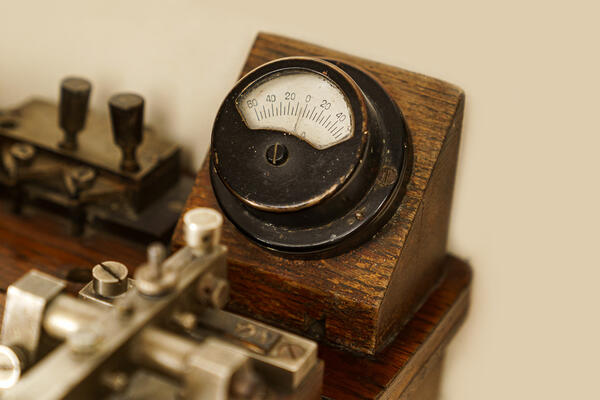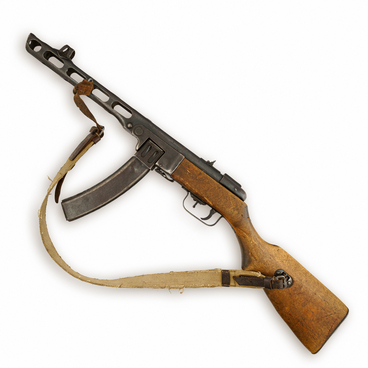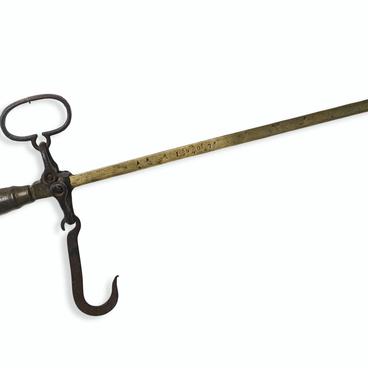The device on display in the museum, consists of several parts, mostly made of gray metal and fixed openly on a wooden console. The console, made of light-colored lacquered wood, has a flat table top, under which there are low supporting edges along the sides. In the front edge there is a hole for a pull-out drawer, on which a spool with a thin narrow paper tape is fixed. The largest part of the apparatus, the receiver, is mounted on the left side of the table top and is a metal parallelepiped set on its long side. Small parts of various shapes are attached to it: at the front, there is probably a tape drive mechanism, and the right side contains batteries.
Behind this structure there is a circular hole in the table top into which a transparent glass is inserted, to the right are two smaller circular blind holes. Along the rear edge of the table top are two small rectangular plates, on which the parts of the appliance in the form of low posts of circular cross-section are mounted. At the right edge of the table top on a low rectangular wooden base a transmitter key with a dark round handle is fixed. The metal plate attached to the largest part of the device shows a poorly legible inscription in Russian: “УП.П.- НКО / Л.Э.М.З. № 8 / № 127 1937 г.“
The electromechanical telegraph machine for
transmitting and receiving messages was invented by Samuel Morse in 1837. Morse
machines worked at numerous stations of Russian railroads until the 1950s, and
in some remote locations until the mid-1960s. The device allows transmitting
coded telegraphic information with its recording on a paper tape and subsequent
decoding. The transmitter key is a manual interrupter of the electrical circuit
connecting the battery, transmitter and receiver. The receiver is equipped with
a tape puller to advance the tape through the writing device. Under the
influence of current pulses from the transmitter, the electromagnet of the
receiver is triggered, which activates the mechanism that presses the dye wheel
against the moving ribbon. Dashes and dots are printed on the tape in
accordance with Morse code. The transmission speed is 400 characters per
minute.
